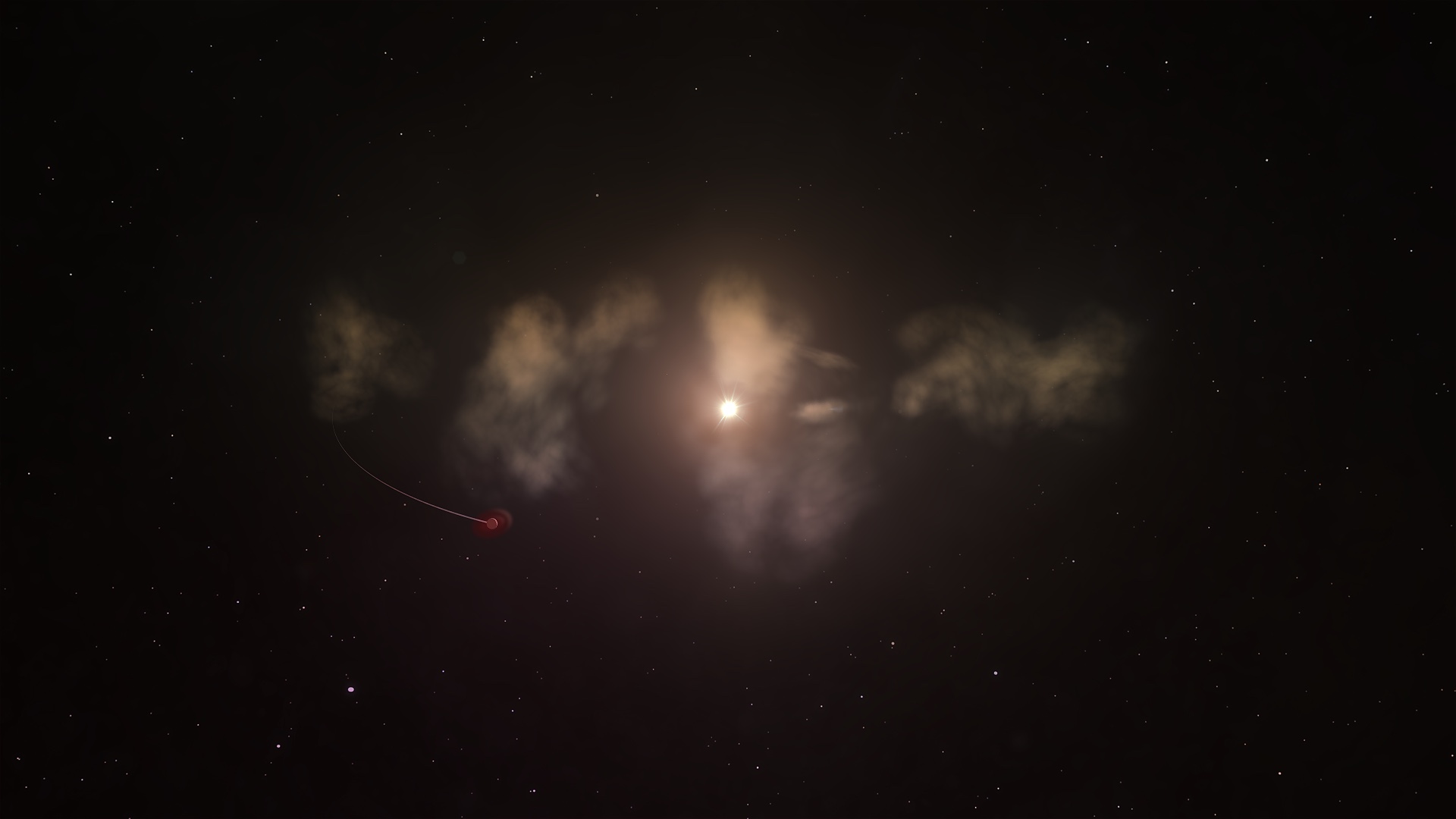Strange Dimming Star May Be Scarfing Down Wrecked Planets
Vast orbiting clouds of planetary wreckage could be causing a distant young star's strange dimming behavior, a new study shows.
The star, known as RZ Piscium, is located about 550 light-years away, in the constellation Pisces. Observations of the young sun-like star revealed unpredictable dimming episodes, during which the star becomes as much as 10 times fainter, according to a statement from NASA announcing the findings.
"Our observations show there are massive blobs of dust and gas that occasionally block the star's light and are probably spiraling into it," Kristina Punzi, lead author of the study and a doctoral student at the Rochester Institute of Technology (RIT) in New York, said in the statement. "Although there could be other explanations, we suggest this material may have been produced by the break-up of massive orbiting bodies near the star." [10 Exoplanets That Could Host Alien Life]
In the study, the astronomers found that the star's erratic dimming behavior can last as long as two days. Observations also showed that nearly 8 percent of the star's total luminosity is infrared, which is a far larger proportion of infrared radiation than that produced by most other stars, such as our sun. This suggests that an enormous amount of warm dust surrounds the star, according to the NASA statement.
Using the European Space Agency's (ESA) XMM-Newton satellite, the researchers confirmed the star's youth by measuring its X-ray output, which is roughly 1,000 times greater than the X-ray output from our sun, according to the statement — younger stars often release more X-ray radiaton.
Furthermore, ground-based observations from the Shane 3-meter telescope at Lick Observatory in California and the 10-meter Keck I telescope at W. M. Keck Observatory in Hawaii revealed that the surface temperature of the star is approximately 9,600 degrees Fahrenheit (5,300 degrees Celsius), which is only slightly cooler than the surface temperature of the sun. Also, the observations showed traces of lithium, which is slowly destroyed by nuclear reactions inside a star as it ages.
"The amount of lithium in a star's surface declines as it ages, so it serves as a clock that allows us to estimate the elapsed time since a star's birth," study co-author Joel Kastner, director of RIT's Laboratory for Multiwavelength Astrophysics, said in the statement. "Our lithium measurement for RZ Piscium is typical for a star of its surface temperature that is about 30 to 50 million years old."
Get the Space.com Newsletter
Breaking space news, the latest updates on rocket launches, skywatching events and more!

Generally, the disk of planet-forming material surrounding a sun-like star condenses to form planets and moons within a few million years of the star’s birth. However, a large amount of gas and dust still circles RZ Piscium, which suggests the star is destroying planets in its vicinity, rather than building them.
The clouds of debris, which orbit approximately 30 million miles (50 million kilometers) from the star, likely formed following a planetary collision, and RZ Piscium now feeds on the leftover planetary material, according to the statement.
But there's a twist: In addition to the leftover material falling inward toward the star, the observations suggest that some of the dust is also flowing outward from the star, the researchers said.
This indicates that RZ Piscium may exert tidal forces that strip material from a neighboring stellar companion or giant planet. This, in turn, would produce intermittent streams of gas and dust, according to the statement.
"While we think the bulk of this debris is about as close to the star as the planet Mercury ever gets to our sun, the measurements also show variable and rapidly moving emission and absorption from hydrogen-rich gas," study co-author Carl Melis, an associate research scientist at the University of California, San Diego, said in the statement.
Based on their observations, the researchers suggest that the star is gobbling up a large planet. The star’s gravity would ultimately rip the planet to shreds, causing some of the observed bursts in X-rays, the researchers said.
Their findings were published Dec. 21 in The Astronomical Journal.
Follow Samantha Mathewson @Sam_Ashley13. Follow us @Spacedotcom, Facebook and Google+. Original article on Space.com.
Join our Space Forums to keep talking space on the latest missions, night sky and more! And if you have a news tip, correction or comment, let us know at: community@space.com.

Samantha Mathewson joined Space.com as an intern in the summer of 2016. She received a B.A. in Journalism and Environmental Science at the University of New Haven, in Connecticut. Previously, her work has been published in Nature World News. When not writing or reading about science, Samantha enjoys traveling to new places and taking photos! You can follow her on Twitter @Sam_Ashley13.









